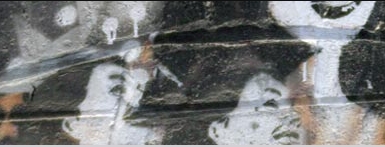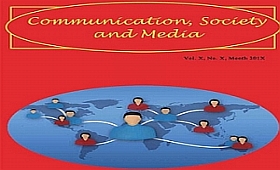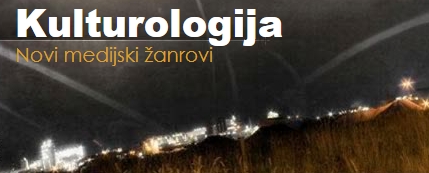 The Croatian doctor of philosophy Sead Alic published his dissertation „Marshal McLuhan’s Philosophy of Media“ at the Center for Philosophy of Media and Medial research in Zagreb. As the author states he tries to find the arguments for the foundations of a new scientific discipline – Philosophy of Media, i.e. for the proofs that it was Canadian Philosopher Marshal McLuhan himself who was the most important theorist opening a new area and developing the method of interdisciplinary approach to the investigation of the media field. (Alic S., „Marshal McLuhan’s Philosophy of Media“, 2010, page 422)
The Croatian doctor of philosophy Sead Alic published his dissertation „Marshal McLuhan’s Philosophy of Media“ at the Center for Philosophy of Media and Medial research in Zagreb. As the author states he tries to find the arguments for the foundations of a new scientific discipline – Philosophy of Media, i.e. for the proofs that it was Canadian Philosopher Marshal McLuhan himself who was the most important theorist opening a new area and developing the method of interdisciplinary approach to the investigation of the media field. (Alic S., „Marshal McLuhan’s Philosophy of Media“, 2010, page 422)
“The crucial part of the problem is the omnipresence of mass media which are changing human experience, and question not only contemporary philosophical idea (in its relation towards seduction and manipulation of new technologies/media), but also throw light onto the history of development of medial mediation and awareness about the meaning and influence of that mediation“, and later on he stresses that „the work of McLuhan is very often simplified and reduced to syntagms like Medium is Message, Global Village, Culture is our Business and similar.“ (Alic S., „Marshal McLuhan’s Philosophy of Media“, 2010, page 422).
PhD Alic understands together with McLuhan that constant introduction of new media during history has changed the human experience, so it’s necessary to change the approach to Life in general as well. Investigating the problem through the Tradition of Philosophy (Socrates, Descartes, Kant, Hegel, Nietzsche and Marx), Alic uses McLuhan to analyse the concept of Extensions (press technology – books and newspapers, advertising, photography, comics, film, radio, TV, fashion, slang and changes in discourse, and writing) as the central idea of his dissertation. Alic was inspired by McLuhan’s knowledge of Art history and his special attention is focused to the problem of perspective in presentation of Reality. Alic agrees with McLuhan that in tribal times the medium of sound was dominant, while with the invention of the press visual aspects predominated altogether with electronic media, which has resulted in cultural ruining of human memory .
Doctor Alic had also discussed related ideas of Debord, Bilwet Archive, Debray and Baudrillard, and analysed the critical confrontation of McLuhan’s ideas and Philosophy of Praxis, that he considers an inspiration for opening the Philosophy of Media and inaugurating Marshal McLuhan as the founder of the Philosophy of Media in Postmodernism.
Although doctor Alic, while inspired by Marshal McLuhan’s accordance with the avant-garde, emphasizes a lot of good and bad sides of mass media impact on human health and culture in general, (what sounds realistic as Alic’s inner dialogue is preserved or won), still there is a question concerning his deep fear of media manipulations as he can’t escape them. How to prevent ourselves from media manipulations? Not everything is in sounds and words which he prefers as a doctor of Croatian Literature as well, by devaluating visual communications he just „guesses“ in the end of the dissertation that there are many meanings in the (archetypical) pictures that carry the potential of consciousness.  Our thesis is that affective deepening in unconscious or artistic roots of Media Art, truly guard or economize us humanly to transform transpersonally from the digital stucking into the anthropological safety of humanized technology.
Our thesis is that affective deepening in unconscious or artistic roots of Media Art, truly guard or economize us humanly to transform transpersonally from the digital stucking into the anthropological safety of humanized technology.
Changing consistency from very concentrated to casual mood, Alic is popular enough to be interesting, but unnecessarily eccentric and not persuasive as he could be. It is strange that in his very valuable book there are so many typographical mistakes, indicating that the book was published in a hurry.
As a co-founder and a member of Program comittee PhD. Sead Alic, together with PhD. Divna Vuksanovic (Serbia) organized International Interdisciplinary Symposium PHILOSOPHY OF MEDIA – Issues of founding, establishing and/or revelation in September, 2011, on the island Cres, thus celebrating the centenary of the birth of Marshall McLuhan.
PhD Vesna Srnic, media-via editor
45.186912
18.000869




 Comics appear
Comics appear















